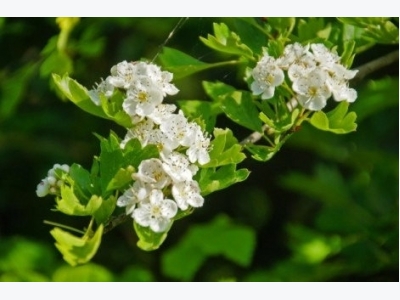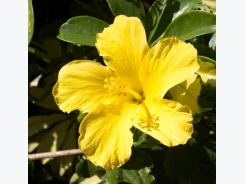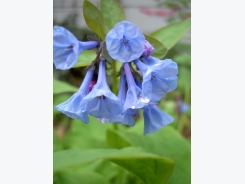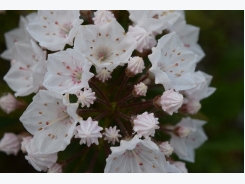How to Grow Hawthorn Trees

Hawthorn trees (Crataegus) are small, versatile trees that make good substitutes for other more commonly grown trees, such as crabapples.
Native to the United States, hawthorn trees can be found growing wild in rural areas or planted as informal hedgerows.
Hawthorn trees also have a long history in Britain, where they figure largely in many old folk tales. The flowers were sometimes used for decorating outdoor garlands, but it was taboo to bring them indoors, because they supposedly brought death and bad luck. The flowers were said to smell like the Great Plague of London.
The trees typically have a rounded, dense habit or an upright habit, depending on the cultivar, and grow 15 to 25 feet tall. They're covered with red, white or pink blossoms in the spring, followed by attractive, small fruits that persist through most of the winter. Hawthorn trees tolerate a wide variety of soil conditions, including drought, clay and alkaline soils, and they tolerate compaction and street pollution, making them suitable for urban areas. The main drawback to hawthorns is their thorns, which can grow 3 inches long. Avoid planting them where children play or in main entryways.
Planting Hawthorn Trees
Hawthorn trees are available in nurseries as seedlings or grafted trees. They are best planted in spring. Dig a hole as deep and twice as wide as the rootball. Set the tree in the hole so it sits 1 inch or so above the surrounding soil. Fill the hole half full with soil and add 2 gallons of water. Allow the water to drain before filling the hole with the remaining soil. Tamp the soil down lightly.
Plant hawthorn trees in full or partial sun. Water them frequently the first season after planting. Thereafter, water them when conditions are dry. Hawthorn trees planted in an irrigated lawn rarely need additional water. Don't fertilize hawthorn trees immediately after planting. The following spring, you can fertilize with ¼ cup of 10-10-10 fertilizer spread in a 4 foot circle around the base of the tree.
Hawthorn trees have a dense form and don't need a lot of pruning. Prune them in winter to remove dead branches or open the tree up to more light. Cut back any branches that grow vertically. Also remove any suckers that grow from the base of the tree. Wear gloves when pruning hawthorns because of the thorns.
Hawthorn Tree Varieties
Washington hawthorn (Crataegus phaenopyrum) grows in zones 3 to 8. This cultivar has thorns, white flowers and an upright, low-branching form. It reaches 30 feet tall and wide.
Cockspur hawthorn (Crataegus crus-galli) grows in zones 3 to 7 and is valued for its rounded form and a profusion of white flowers in the spring. This tree is heavily thorned, although a thornless variety is available. The white flowers may emit an unpleasant odor. Cockspur hawthorn typically grows 25 feet tall and wide.
Lavalle hawthorn (Crataegus x lavallei) thrives in zones 3 through 7. It has large, glossy leaves, 3 inch, white flowers and brilliant fall foliage. Lavalle hawthorn is a compact hybrid, growing only 20 feet tall.
Hawthorn Pests and Problems
Hawthorns are related to roses, and like apples and crabapples, are susceptible to fireblight and rust. Avoid planting them in areas prone to these diseases or choose resistant varieties. Hawthorns may become infested with aphids, scale or mites. Treat these insects with insecticidal oil or soap.
Có thể bạn quan tâm
Phần mềm

Phối trộn thức ăn chăn nuôi

Pha dung dịch thủy canh

Định mức cho tôm ăn

Phối trộn phân bón NPK

Xác định tỷ lệ tôm sống

Chuyển đổi đơn vị phân bón

Xác định công suất sục khí

Chuyển đổi đơn vị tôm

Tính diện tích nhà kính

Tính thể tích ao hồ




 How to Grow Sea Berry
How to Grow Sea Berry  How to Grow Mountain Laurel
How to Grow Mountain Laurel